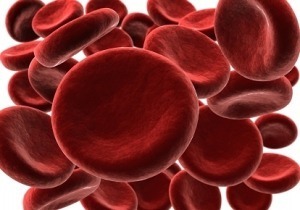Article describes the accurate and safe management of fluid balance

The physiology of fluid balance in humans should be understood and applied in clinical practice. Fluid balance, when managed accurately and safely, can prevent significant morbidity and mortality” Watson and Austin (2018). Abstract: The physiology of fluid balance in humans should be understood and applied in clinical practice. Fluid balance, when managed accurately and safely, […]
Article offers definitions and descriptions of osmolarity, osmolality, osmotic and oncotic pressure

This article first outlines definitions and descriptions of key terms that will be used in the discussions that follow, including osmolarity, osmolality, osmotic and oncotic pressure” Waterhouse and Farmery (2018). Abstract: This article first outlines definitions and descriptions of key terms that will be used in the discussions that follow, including osmolarity, osmolality, osmotic and […]
Outcomes associated with an infection control and prevention program in a Russian neuro-ICU

The implementation of an evidence-based IPC program in a middle-income country (Russia) was highly effective in HAI prevention with meaningful reductions in antibiotic resistance” Ershova et al (2018). Abstract: Background: The impact of infection prevention and control (IPC) programs in limited resource countries such as Russia are largely unknown due to a lack of reliable […]
Web-based multitiered surveillance system for predicting CLABSI

A computer-automated method of CLABSI detection can improve the validity of surveillance. A new web-based, multitiered surveillance system for predicting and reducing CLABSI is proposed” Noaman et al (2018). Abstract: Central-line-associated bloodstream infection (CLABSI) rates are a key quality metric for comparing hospital quality and safety. Manual surveillance systems for CLABSIs are time-consuming and often […]
Integration of robotic phlebotomy with downstream sample processing

This paper presents a medical device that enables end-to-end blood testing by performing blood draws and providing diagnostic results in a fully automated fashion at the point-of-care” Balter et al (2018). Abstract: Diagnostic blood testing is the most commonly performed clinical procedure in the world, and influences the majority of medical decisions made in hospital […]
Successful hemodialysis through persistent left superior vena cava

We hereby present a case of persistent left superior vena cava that was incidentally encountered after the placement of a hemodialysis catheter through the left internal jugular vein. This case highlights the pertinent radiologic findings and emphasizes the importance of familiarity to such an anatomic anomaly” Meena et al (2018). Abstract: Persistent left superior vena […]
Home infusion teaching practices at hemophilia treatment centers

Home management of hemophilia is standard of care in many countries. This study examined current nursing practices in teaching home infusion (HI) at hemophilia treatment centers (HTC) in the USA” Santaella et al (2018). Abstract BACKGROUND: Home management of hemophilia is standard of care in many countries. This study examined current nursing practices in teaching […]
How has the global hand hygiene improvement project progressed?

This represents a snapshot of the current position of global hand hygiene improvement efforts, outlining facility progress and highlighting the value of such an assessment tool” Kilpatrick et al (2018). Summary: The World Health Organization (WHO) has conducted two global surveys in 2011 and 2015 using the Hand Hygiene Self-Assessment Framework (HHSAF). In 2011, 2119 […]
Taurolidine lock is a cost-effective intervention in patients on HPN with high risk of CRBSI

Our study shows that taurolidine lock is a cost-effective intervention in patients on HPN with high risk of CRBSI” Arnoriaga Rodríguez et al (2018). Abstract: INTRODUCTION: catheter-related bloodstream infections (CRBSI) are one of the most serious concerns in patients on home parenteral nutrition (HPN) which involve high morbidity and cost for the healthcare system. In […]
Optimizing the electronic health record in the parenteral nutrition workflow

Surveys have shown that current electronic health record (EHR) systems are in need of functionality enhancement for safe and optimal delivery of PN” Vanek et al (2018). Abstract: Parenteral nutrition (PN) is a complex therapeutic modality provided to neonates, children, and adults for various indications. Surveys have shown that current electronic health record (EHR) systems […]
What is the effect of increased flow rate on intravenous fluid warming?

The efficacy of fluid warming was inversely associated with the increase in flow rate” Thongsukh et al (2018). Abstract: INTRODUCTION: In patients who require a massive intraoperative transfusion, cold fluid or blood transfusion can cause hypothermia and potential adverse effects. One method by which to prevent hypothermia in these patients is to warm the intravenous […]
Efficacy of the Buzzy System for pain relief during venipuncture in children

The Buzzy System combined to distraction cards showed a greater reduction of perceived pain than “magic glove” technique” Susam et al (2018). Abstract: BACKGROUND AND AIM OF THE WORK: procedural pain is a significant issue for paediatric patients. In particular, needle pain is amongst the most stressful for children. Studies revealed that a large number […]
Perfused cadaver model for trauma training in the out-of-hospital setting

We endeavor to describe a transportable central-perfused cadaver model suitable for training in the battlefield environment. Goals of design were to create a simple, easily reproducible, and realistic model to simulate procedures in field and austere conditions”Redman and Ross (2018). Abstract: BACKGROUND: Cadaver training for prehospital surgical procedures is a valid training model. The limitation […]
Seroconversion after needlestick injuries in Germany

The injuries occurred most often during waste disposal and high-risk procedures such as taking blood samples. The injuries were most often caused by cannulas for intravenous puncture” Dulon et al (2018). Abstract: Objective: After a needlestick injury (NSI) with contaminated blood, there is a risk of seroconversion. Statutory accident insurance (SAI) claims data were used […]
Exposure to biological agents result from injuries caused by needles

In Italy, about 70-80% of all cases of exposure to biological agents result from injuries caused by needles or other sharp instruments used during healthcare procedures” Triassi and Pennino (2018). Abstract: Exposure to pathogenic agents is a major occupational risk factor in healthcare facilities. The most common pathogenic agents are human immunodeficiency virus, hepatitis B […]
Best dressing and securement for the prevention of peripheral intravenous catheter failure?

Two billion peripheral intravenous catheters (PIVCs) are used globally each year, but optimal dressing and securement methods are not well established. We aimed to compare the efficacy and costs of three alternative approaches to standard non-bordered polyurethane dressings” Rickard et al (2018). Abstract: BACKGROUND: Two billion peripheral intravenous catheters (PIVCs) are used globally each year, […]
External or internal jugular vein for tunneled central line insertion in children?

The aim of this study is to compare the outcomes of external jugular vein (EJV) and internal jugular vein (IJV) tunneled catheters inserted using the open technique” Alshafei et al (2018). Abstract: BACKGROUND/PURPOSE: Tunneled central venous catheters (TCVCs) are commonly used to manage pediatric patients with chronic disease. The aim of this study is to […]
Heparin versus 0.9% sodium chloride locking for prevention of IV occlusion?

This review looks at the effectiveness and safety of intermittent locking with heparin compared to 0.9% NaCl to see if the evidence establishes whether one is better than the other. This work is an update of a review first published in 2014″ López-Briz et al (2018). Abstract: BACKGROUND: Intermittent locking of central venous catheters (CVCs) […]
Central venous catheter position confirmation by point of care ultrasound

We hypothesize that a knowledge translation gap exists in this area. We aim to describe the current clinical practice regarding POCUS alone for CVC position confirmation and pneumothorax exclusion as compared to chest radiography” Ablordeppey et al (2018). Abstract: PURPOSE: Although routine chest radiographs (CXR) to verify correct central venous catheter (CVC) position and exclude […]
National CLABSI surveillance data in paediatric patients

The broad objective of this study was to establish national benchmark data around rates of CLABSI in neonatal and paediatric intensive care units (NICUs and PICUs) and paediatric oncology units (ONCs)” Kouni et al (2018). Abstract: BACKGROUND: Healthcare-associated infections (HAIs) are associated with increased morbidity and mortality and with excess costs. Central line-associated bloodstream infections […]
Considering the cause of chronic inflammation in dialysis patients

One important aspect of cardiovascular risk among dialysis patients is chronic inflammation. Iatrogenic sources of chronic inflammation in the form of failed renal allografts, old clotted arteriovenous grafts, and hemodialysis catheters play important, sometimes, unrecognized roles in this inflammatory state” Achinger and Ayus (2018). Abstract: Cardiovascular mortality accounts for most deaths among hemodialysis patients and […]
Efficacy of lactated Ringer’s versus normal saline in shock

To compare the clinical efficacy of lactated Ringer’s (LR) and normal saline (NS) in treating patients with septic shock” Mao et al (2018). Abstract: Objective: To compare the clinical efficacy of lactated Ringer’s (LR) and normal saline (NS) in treating patients with septic shock. Methods: The clinical data of 198 patients with septic shock who […]
Blood-borne viral infections in pediatric hemodialysis

Here we review risk factors of blood-borne viral infections, strategies for prevention, and approach to therapy in the pediatric hemodialysis population” Menon and Munshi (2018). Abstract: Hemodialysis patients are at increased risk for development of blood-borne viral infections. Human immunodeficiency virus (HIV), a once fatal infection, has become treatable, but continues to be associated with […]
Catheter and non-catheter-related upper extremity deep vein thrombosis in patients with cancer

Patients with cancer have an increased risk of venous thromboembolism. Upper extremity venous system is a peculiar site, and little is known about the clinical course in patients with cancer” Mansour et al (2018). Abstract: Patients with cancer have an increased risk of venous thromboembolism. Upper extremity venous system is a peculiar site, and little […]
Case study examines PICC safety in orthopedic patients

PICC is a safe intravenous device that can be successfully utilized for medium- and long-course intravenous therapy in hospitalized and discharged orthopedic patients” Santolim et al (2018). Abstract: OBJECTIVES: The advantages of using a peripherally inserted central catheter (PICC) in hospitalized patients make this device very important for intravenous therapy. This study describes the use […]
Hospital-acquired infections under pay-for-performance systems

The purpose of this review is to explore the impact of hospital-acquired infection on payment under pay-for-performance systems, and provide perspective on the role of administrators in infection prevention” Vokes et al (2018). Abstract PURPOSE OF REVIEW: The purpose of this review is to explore the impact of hospital-acquired infection on payment under pay-for-performance systems, […]
Effectiveness of heparin to prevent occlusion in central venous access devices

To evaluate the effectiveness of HS compared to PS to prevent occlusion in CVAD” Re et al (2018). Abstract: INTRODUCTION: Prevention of central venous access devices (CVAD) occlusion is crucial to the continuity and quality of care. There is wide consensus on the need to carry out a periodic flushing of the lumen of device […]
Standard long IV catheters versus extended dwell IV catheters

A longer extended dwell catheter represents a viable and favorable alternative to the standard longer IVs used for US-guided cannulation of veins >1.20 cm in depth” Bahl et al (2018). Abstract: INTRODUCTION: Establishing peripheral intravenous (IV) access is a vital step in providing emergency care. Ten to 30% of Emergency Department (ED) patients have difficult vascular […]
Intravenous catheter survival impacted by amount of catheter residing in the vein

The quantity of catheter residing in the vein is a key predictor of long-term functionality of US-guided IVs and is strongly associated with the hazard of failure within 72 hours” Pandurangadu et al (2018). Abstract: OBJECTIVE: Ultrasound (US)-guided peripheral IVs have a high failure rate. We explore the relationship between the quantity of catheter residing within […]
Test-enhanced learning for ultrasound-guided peripheral intravenous insertion

In this study of novice learners, both TEL with structured practice and structured practice alone lead to high success rates performing USG IV insertion on a simulated model” Slomer et al (2018). Abstract: INTRODUCTION: Teaching procedural skills in medicine is time- and resource-intensive, and it is therefore important to determine which educational strategies are most […]

